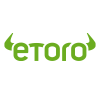First Mover Asia: Is Bitcoin's Ride Past $24.1K a Stopping Point or Sign of Further Gains?
ALSO: Shaurya Malwa writes that Waves’ decision to abandon the stablecoin model underlines a decline in this sector stemming from the terraUSD implosion and other debacles.



:quality(70)/cloudfront-us-east-1.images.arcpublishing.com/coindesk/MASH4IGR7VAHNJE76VYFGVEH3Q.jpg 400w)
:quality(70)/cloudfront-us-east-1.images.arcpublishing.com/coindesk/2RZUBDZQXZEBVOFSEUBZVSG6QQ.jpg 400w)
:quality(70)/cloudfront-us-east-1.images.arcpublishing.com/coindesk/J7BPCKAO3VDLLOSMFSDVJ7TRME.jpg)
:format(jpg)/cloudfront-us-east-1.images.arcpublishing.com/coindesk/SWPGSD2NDVHKDHCUUFCLUIOZ54.png)
:format(jpg)/cloudfront-us-east-1.images.arcpublishing.com/coindesk/ZDC3FRMKDBCHDMRLSDPLCIVTUE.jpg)
:format(jpg)/cloudfront-us-east-1.images.arcpublishing.com/coindesk/RONYEB2JQ5A35FLPSB5QKK365U.jpg)